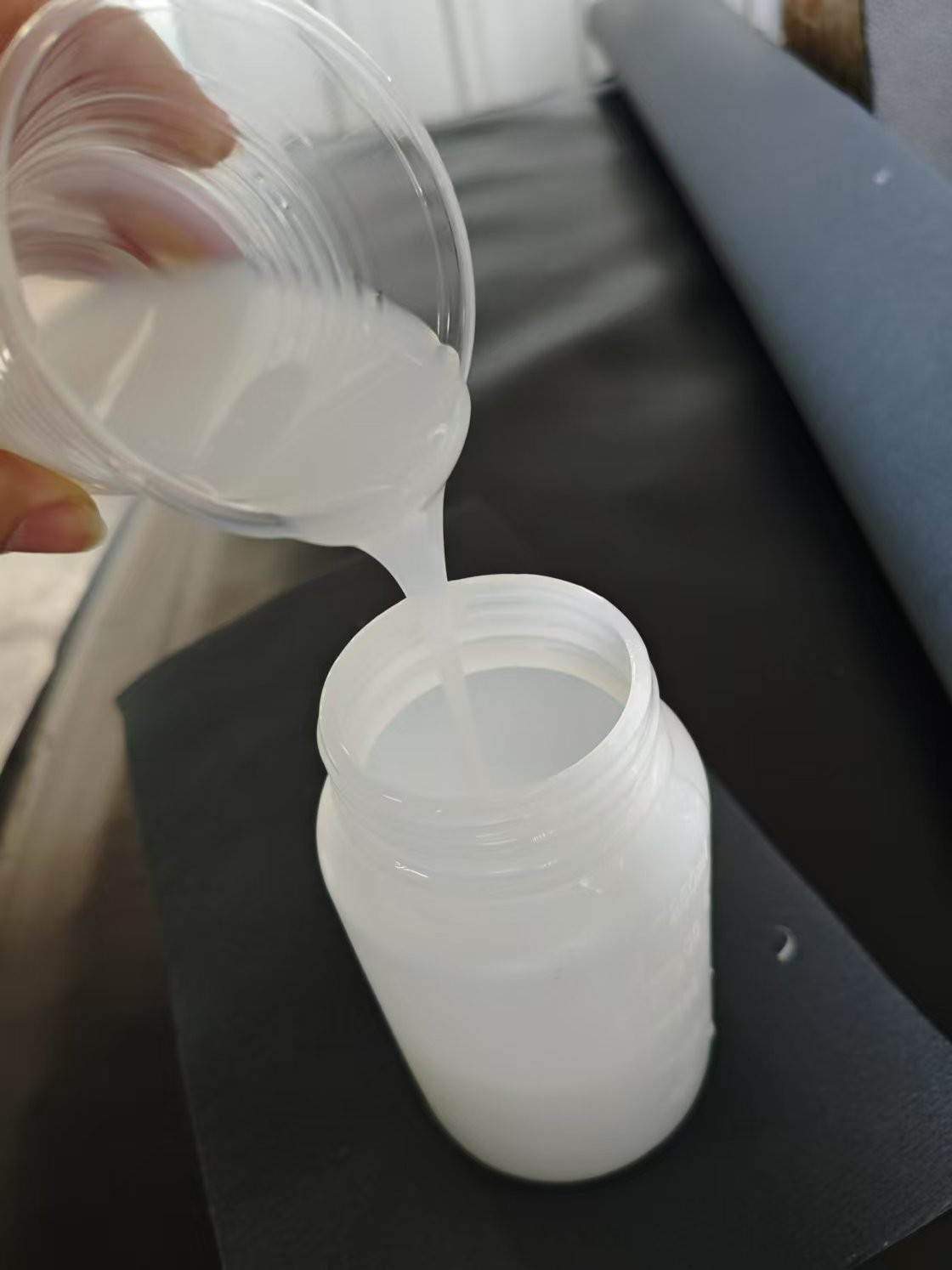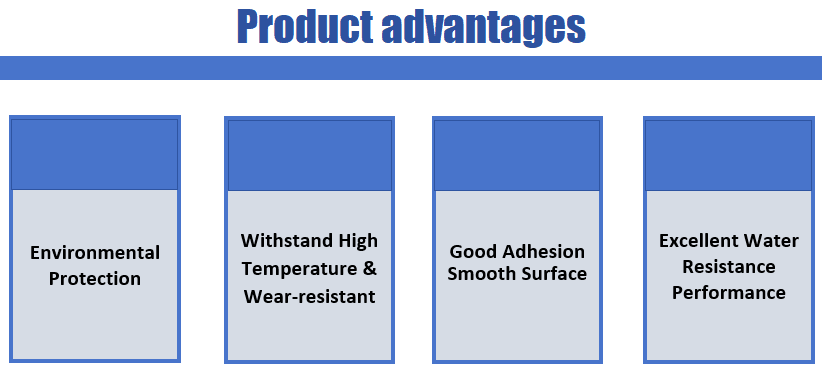Introduction

Water-based adhesives have become a popular choice in various industries due to their eco-friendly properties and versatility. From crafting to construction, these adhesives offer a reliable bond without the harsh chemicals found in traditional options. In this guide, we will explore the world of water-based adhesives, including water-based latex adhesive, leather glue, rubber glue, and adhesive for paper.
Understanding Water-Based Adhesives
Water-based adhesives are formulated with water as the primary solvent, making them safer for both users and the environment. These adhesives typically consist of polymers that provide strong bonding capabilities while being easy to clean up with just soap and water. They come in various types, including those specifically designed for leather applications or paper projects.
Why Choose Water-Based Options?
Choosing water-based options means opting for a more sustainable solution that reduces harmful emissions and promotes better indoor air quality. Additionally, these adhesives are generally non-toxic and less flammable than their solvent-based counterparts, making them safer to use in homes and workplaces alike. With advancements in technology, water-based adhesives now offer comparable performance to traditional glues while being kinder to our planet.
Applications of Water-Based Adhesives
The applications of water-based adhesives are vast and varied; they can be found in industries ranging from furniture manufacturing to arts and crafts. For instance, a water-based latex adhesive is ideal for bonding textiles or laminates due to its flexibility and strength. Additionally, leather glue adhesive is perfect for repairing shoes or crafting leather goods while rubber glue serves well in DIY projects that require durable bonds on various surfaces—making them essential tools for any creator's toolkit.
What is Water-Based Adhesive?

Water-based adhesives are a type of bonding agent that uses water as a primary solvent. This means they are typically less toxic and more environmentally friendly than their solvent-based counterparts. They can be used in various applications, ranging from crafting to industrial manufacturing, making them incredibly versatile.
Definition and Composition
At its core, a water-based adhesive is composed of polymer resins suspended in water, which evaporates during the drying process to leave behind a strong bond. These adhesives can include various components such as emulsifiers, surfactants, and stabilizers to enhance performance. The result is an adhesive glue that provides excellent adhesion while being easy to clean up with just soap and water.
Types of Water-Based Adhesives
There are several types of water-based adhesives available on the market today, each tailored for specific applications. For instance, the water based latex adhesive is popular for its flexibility and ease of use in crafts and light industrial applications. Other types include leather glue specifically designed for bonding leather materials and rubber glue that works well in crafts requiring elasticity.
Benefits of Using Water-Based Adhesives
Choosing water-based adhesives comes with a plethora of benefits that make them appealing across industries. Firstly, they are generally safer for both users and the environment since they emit fewer volatile organic compounds (VOCs). Additionally, they provide strong bonds suitable for various materials—be it paper projects or leather—making them some of the best adhesive glues available today.
Exploring Water-Based Latex Adhesive

Water-based latex adhesives are gaining popularity across various industries due to their unique properties and versatility. These adhesives are made from a blend of synthetic polymers and water, making them easy to apply and clean up. Their non-toxic nature also makes them a safer choice compared to solvent-based alternatives, appealing to environmentally conscious consumers.
Features of Water-Based Latex Adhesives
One of the standout features of water-based latex adhesives is their quick-drying capability, which allows for faster project completion without compromising bond strength. They provide excellent flexibility once cured, making them ideal for applications that require movement or expansion, such as in leather adhesive uses. Additionally, these adhesives exhibit strong adhesion properties on various surfaces, including wood, fabric, and paper—making them a go-to option for many crafting needs.
Key Applications in Various Industries
Water-based latex adhesive finds its way into numerous industries due to its adaptability. In the textile industry, it serves as an effective leather glue adhesive for bonding fabrics with leather materials seamlessly. The construction sector also utilizes this adhesive extensively for flooring installations and wall coverings because it provides durability while being easy to work with—an essential factor when choosing the best adhesive glue for heavy-duty applications.
Comparison with Other Adhesives
When comparing water-based latex adhesives with other types like rubber glue or traditional solvent-based options, it's clear they hold their ground well. While rubber glue offers strong bonds particularly suited for flexible materials, the water-based latex variety excels in ease of use and cleanup without harsh chemicals involved. Moreover, unlike some leather glues that may emit strong odors or require special handling precautions, water-based latex adhesives provide a more user-friendly experience—perfect for both professionals and DIY enthusiasts alike.
The Versatility of Leather Adhesives

Leather adhesives come in various forms, each designed for specific applications and types of leather. Whether you’re crafting a stylish handbag or repairing a beloved pair of shoes, understanding the different types of leather glue is essential for achieving strong and lasting bonds.
Types of Leather Glue and Their Uses
There are several types of leather glue available on the market today, each with unique properties tailored for specific tasks. Water-based latex adhesive is a popular choice due to its flexibility and ease of use; it’s perfect for projects where movement is expected, such as shoes or clothing. Other options include contact cement, which provides an instant bond but requires careful application, and specialty leather glue adhesives that are formulated specifically for heavy-duty repairs.
For lighter projects, like crafting wallets or small accessories, a simple water-based adhesive may suffice. It allows for repositioning before setting while still providing adequate strength once cured. Understanding these differences ensures that you select the best adhesive glue for your particular project.
Choosing the Right Leather Adhesive
Choosing the right leather adhesive can be daunting given the multitude of options available today. Factors such as type of leather, intended use, and environmental conditions play critical roles in your decision-making process. If you're working on delicate materials or need flexibility in your project, opting for a water-based latex adhesive would be wise; it offers both strength and adaptability.
Conversely, if you're tackling heavy-duty repairs on thick leather items like belts or bags, consider using a more robust option like contact cement or specialized leather glue adhesives designed to withstand stress. Always read labels carefully to ensure compatibility with your specific materials—after all, nobody wants their hard work to fall apart because they chose the wrong type!
Best Practices for Leather Application
To get the best results from your chosen leather glue adhesive, follow some tried-and-true practices during application. First off, always clean both surfaces thoroughly before applying any adhesive; dirt or oils can weaken bonds significantly! For rubber glue, apply an even layer on both surfaces and allow it to become tacky before pressing them together—this will ensure maximum adhesion.
When using water-based latex adhesive or any other type of glue on leather projects involving intricate designs or seams, consider using clamps or weights to hold pieces together while they dry; this prevents shifting and guarantees a solid bond once cured. Lastly, patience is key: allow ample drying time as specified by product instructions to achieve optimal results without compromising your hard work!
The Role of Rubber Glue in Crafts

Rubber glue is a versatile adhesive that finds its place in various crafting applications, making it an essential tool for hobbyists and professionals alike. This adhesive excels at bonding materials like paper, fabric, and even some plastics, thanks to its unique formulation that allows for flexibility and durability. Whether you're working on a scrapbook, creating leather projects with leather glue adhesive, or tackling home decor crafts, rubber glue can be your best ally.
When to Use Rubber Glue
Knowing when to reach for rubber glue can elevate your crafting game significantly. It’s particularly effective when you need a strong bond that can withstand movement or stress; think about projects involving flexible materials or items that may be subject to wear and tear. For instance, if you're applying a water based latex adhesive on paper that will be folded or moved frequently, rubber glue provides the additional support needed for longevity.
Advantages of Rubber-Based Adhesives
Rubber-based adhesives come with a host of advantages that make them stand out among other options like leather glue or standard adhesive glue. One major benefit is their ability to create strong yet flexible bonds; this is crucial in crafts where movement is inevitable. Additionally, these adhesives are generally water-resistant once cured, making them ideal for outdoor projects or those exposed to moisture—something you won’t always get with other types of adhesives.
Tips for Effective Bonding with Rubber Glue
To maximize the effectiveness of your rubber glue application, consider these handy tips: First off, ensure both surfaces are clean and dry before applying the adhesive; dirt and moisture can compromise the bond strength significantly. Next, apply an even layer of rubber glue—too much can lead to messy results while too little might not hold properly; finding that sweet spot is key!
Ideal Adhesive for Paper Projects

When it comes to paper projects, the right adhesive can make all the difference between a masterpiece and a mess. Choosing an adhesive for paper is not just about sticking things together; it's about ensuring that your creations stand the test of time without warping or tearing. Whether you're crafting greeting cards, scrapbooking, or working on school projects, knowing which adhesive glue works best is essential.
Choosing the Best Adhesive Glue for Paper
The best adhesive glue for paper often depends on the specific project at hand. For lightweight papers, a water-based latex adhesive is an excellent choice due to its quick-drying properties and flexibility. If you're working with heavier cardstock or layered materials, consider using a stronger leather glue adhesive that provides a more durable bond while still being safe for paper.
Another great option is rubber glue, which offers strong adhesion and can be repositioned if needed before it fully sets. It's crucial to avoid adhesives that are too thick or heavy because they can cause your paper to buckle or warp over time. Ultimately, selecting the right type of leather adhesive or rubber glue will ensure your projects look polished and professional.
Application Techniques for Paper Adhesives
Applying adhesives properly is just as important as choosing the right one. Start with clean surfaces; dust and debris can interfere with adhesion, making your efforts futile. For water-based latex adhesives, use a brush or applicator to spread an even layer across both surfaces; this ensures maximum contact and reduces clumping.
For rubber glue applications, apply sparingly since too much can lead to messy results—less is often more! When using leather glue for intricate designs or layered pieces, consider using fine-tip applicators to control where the adhesive goes precisely. Remember: patience pays off; let each layer dry completely before adding another element!
Common Mistakes to Avoid
Even seasoned crafters can fall into traps when working with adhesives for paper projects! One common mistake is applying too much pressure while adhering layers together—this can lead to wrinkling or tearing of delicate papers. Additionally, mixing different types of adhesives like rubber glue with other glues may result in unexpected reactions that compromise your project’s integrity.
Another pitfall is neglecting drying times; rushing through this process might leave you with incomplete bonds that fail under stress later on. Finally, don’t forget about storage! Properly sealing any leftover leather glue or rubber-based products will prolong their lifespan so you’re always ready for your next creative endeavor.
Conclusion

As we wrap up our exploration of water-based adhesives, it's clear that these products offer a versatile and eco-friendly solution for a variety of applications. From crafting with adhesive for paper to bonding leather with specialized leather glue, the options are plentiful and effective. Understanding the different types—like water-based latex adhesive or rubber glue—can help you make informed choices that suit your specific needs.
Key Takeaways on Water-Based Adhesives
Water-based adhesives stand out due to their ease of use and strong bonding capabilities across various materials. Whether you're using leather glue for crafts or an adhesive for paper projects, these products provide reliable results without the harsh chemicals found in solvent-based options. Remember, when selecting the best adhesive glue, consider factors like drying time, flexibility, and application methods to ensure optimal performance.
The Environmental Benefits of Water-Based Solutions
One of the most compelling reasons to opt for water-based solutions is their minimal environmental impact compared to traditional adhesives. With lower volatile organic compounds (VOCs), water-based latex adhesive and other similar products contribute less to air pollution and are safer for indoor use. Choosing eco-friendly options like leather adhesive not only benefits your projects but also supports a healthier planet.
Final Thoughts on Choosing the Best Adhesive Glue
When it comes down to it, selecting the right adhesive glue hinges on your specific project requirements and material compatibility. Whether you need rubber glue for crafting or a robust leather glue adhesive for repairs, understanding each product's features will lead you to success in your endeavors. Ultimately, embracing water-based adhesives can elevate your work while being kinder to our environment—a win-win situation!
[Image description=various tubes of water based adhesives including labels for leather glue and rubber glue on a wooden table, bright lighting highlighting colors, tools scattered around], Image name=water_based_adhesives_collection, Alt tag=water based latex adhesive options displayed creatively on table
